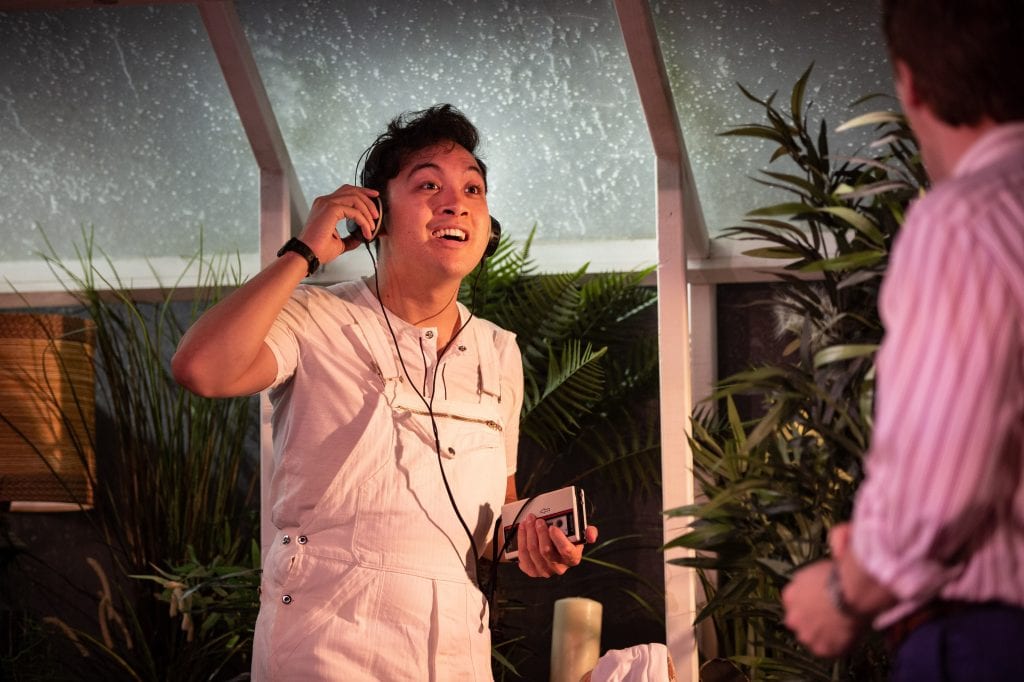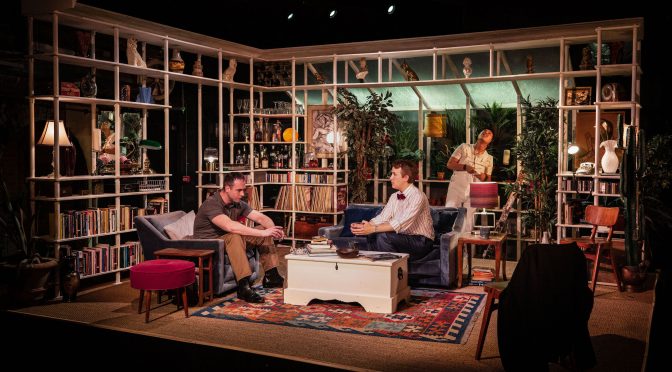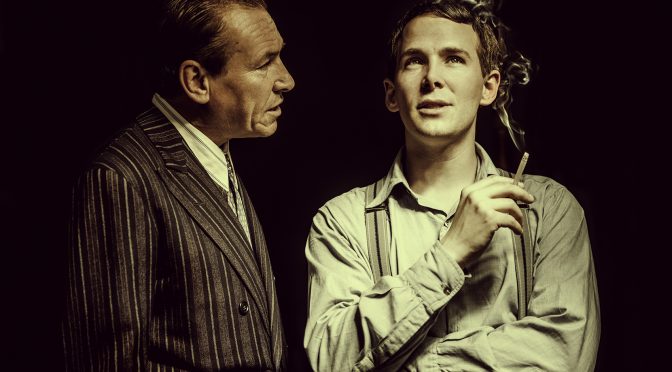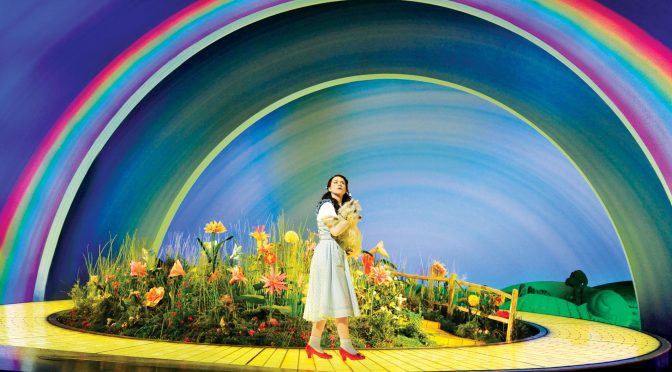Matt Ryan’s restrained revival of Kevin Elyot’s play proves enlightening. The story – of lust and unrequited love among a group of gay friends – balances comedy and tragedy. Sensitive to, but not enthralled by, the combination of laughs and tears, Ryan presents a surprisingly downbeat version. A melancholy edge gives the 1995 script a timeless quality.
My Night With Reg is very funny. The waspish banter and bickering makes for great one-liners. Pairing the introverted Guy with his extrovert friends is key to much of the humour. The larger-than-life Daniel and the smaller roles of Benny and Bernie are vividly portrayed by Gerard McCarthy, Stephen K Amos and Alan Turkington respectively. The jokes are there, but each performer makes sure their character’s individuality and pain are clear. You end up feeling a little too sorry for everyone you see.
The sense of tortured souls is even more pronounced with central roles. Guy is a nervous figure, which can be fun. But laughing at him proves hard in Paul Keating’s fraught portrayal (you start to wonder if this prim figure might have serious problems). Edward M Corrie takes the part of Guy’s life-long crush, John, hitting the bottle and looking lost throughout. Both performances are consistent and careful, but to a fault. Making both so miserable strips the play of surprises.

A final character, the much younger Eric, comes to the fore and makes a star role for James Bradwell. Appropriate to the play’s elegiac nature, Eric’s naïve questions about how to live and love are well delivered and Bradwell gives the role depth. Ryan focuses on questions around monogamy and honesty – the Aids epidemic that Elyot was responding to becomes more of a backdrop than you might expect.
While the trauma of Aids for a generation of gay men is always given its due, what could have been an ‘issues’ play, looking at a moment in history, is opened up. Ryan might be taking us closer to how the gay community experienced the epidemic – as it unfolded, rather than an event with a narrative constructed afterwards. And he makes those concerns about fidelity and truthfulness present in the play ring out louder than ever. The thoughtful approach brings benefits to both play and production: win-win.
Until 21 August 2021
Photos by Mark Senior



